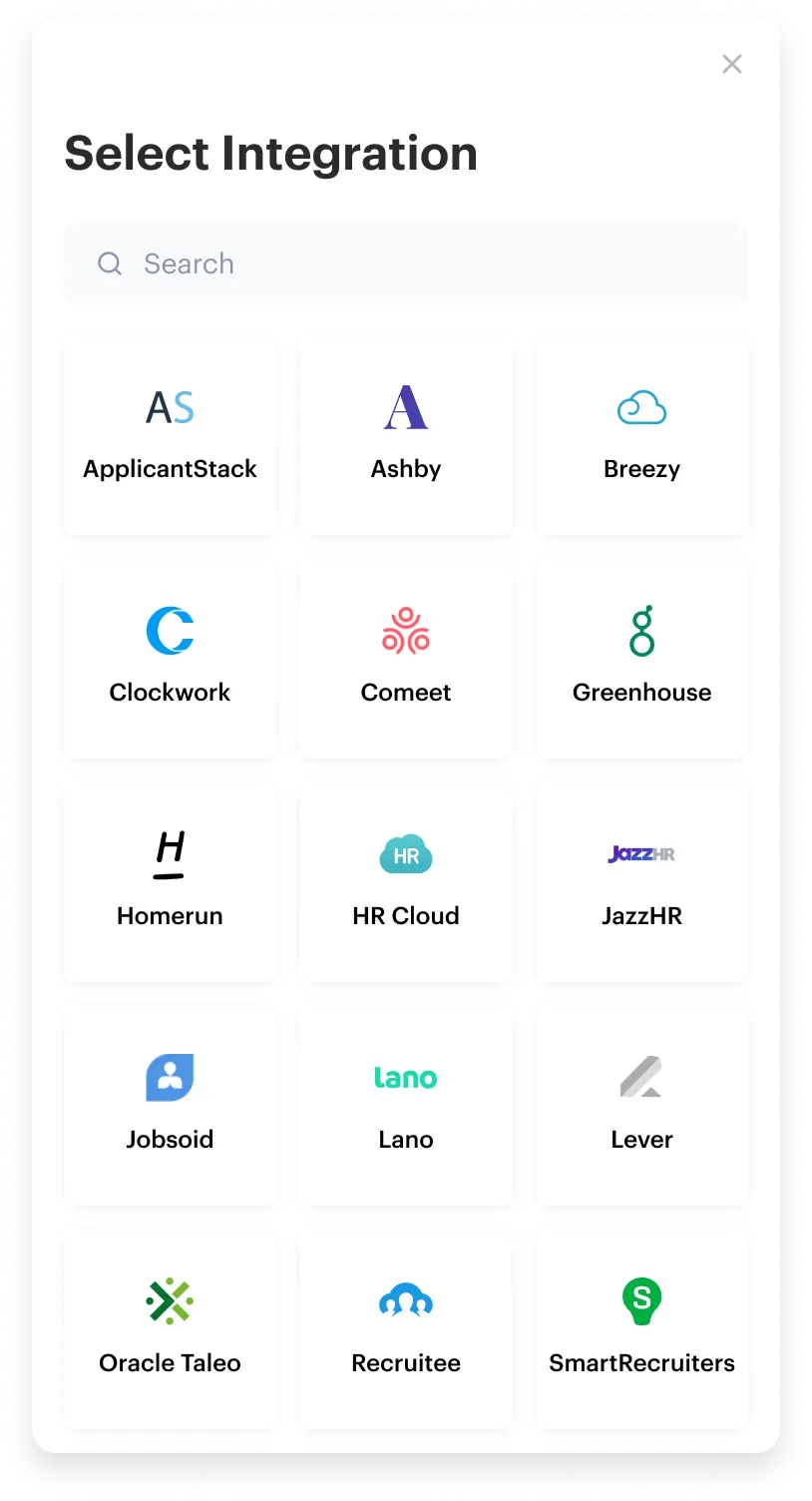Integrate Greenhouse with your product—along with any other ATS application
Connect your product to all the applications your customers use via Merge's Unified API to close more deals, retain customers, and expand to new markets








Sync Greenhouse data
FAQ on integrating with Greenhouse API
How frequently does Merge sync data with Greenhouse?
It depends on your selected sync plan and the Common Models you’re interested in. That said, here’s how it varies across the sync plans:
- Daily: Syncs occur every 24 hours
- Standard: Syncs happen every hour, 2 hours, 6 hours, or 12 hours
- High: Syncs take place every 10 minutes, 30 minutes, hour, 3 hours, or 6 hours
- Highest: Syncs happen every 1-5 minutes, 10 minutes, 30 minutes, or hour
For syncing outside of normal intervals, you can also use the Force Resync endpoint or the Automatic Webhooks feature.
Learn more about Merge’s sync frequencies for Greenhouse.
Which Greenhouse API endpoints does Merge interact with?
Merge interacts with various Greenhouse API endpoints to access information such as candidates, users, departments, offices, tags, attachments, job posts, and more. Moreover, Merge supports PATCH, GET, and POST requests across many of these endpoints.
For a detailed list of endpoints, the specific data Merge can access, and the HTTP methods Merge supports for a given endpoint, refer to this page.
What organizations use Merge’s integration with Greenhouse?
A broad range of companies use it, including Fetcher, BrightHire, Assemble, and Causal.
To learn more about how companies use Merge’s Greenhouse integration—along with other ATS integrations—you can visit this page.
Is there a limit to the number of Greenhouse accounts I can integrate using Merge?
Merge doesn’t impose a strict limit on the number of Greenhouse accounts you can integrate. However, pricing and plan details may vary based on the number of production linked accounts.
To get a better idea of how Merge prices its Greenhouse integration, along with its other integrations, you can connect with one of our integration experts.
Can Merge access custom data fields from Greenhouse?
Yes, Merge can access custom data fields from Greenhouse.
By using features like Field Mapping, Remote Data, and Authenticated Passthrough Request, you can retrieve and manage custom data beyond Merge’s default Common Models. This flexibility ensures that your integration aligns with your customers’ specific data requirements.
What ATS integrations does Merge support in addition to Greenhouse?
Merge supports 50+ ATS integrations, making it easy for you to integrate with other leading platforms via Merge’s ATS Unified API. These include:
- Lever
- Workday Recruiting
- SmartRecruiters
- BambooHR
- iCIMS
- Jobvite
- Ashby
- SAP SuccessFactors
- Oracle Taleo
New Year's Day - 1/1/2024Memorial Day - 5/27/20244th of July - 7/4/2024Labor Day - 9/2/2024Thanksgiving Day - 11/28/2024Day after Thanksgiving - 11/29/2024Christmas Eve - 12/24/2024Christmas Day - 12/25/2024

Trusted to power integrations at
























Make integrations your competitive advantage
More sales, less code, fewer headaches
Focus on your core product
Stop diverting your engineers to yet another integration and let them get back to work.
Give customer success a break
Manage your simplified integration issues in a single pane. No therapist required.
Stop losing sales due to integrations
Launch integrations in days, not quarters. Your sales team will thank you.
.png)

Integration authentication that feels like magic
Merge seamlessly manages authentication and authorization on behalf of your customers.
Offer account linking and permission controls to your users with Link for a customizable frontend or with Magic Link for URL-based authorization
The toolkit for all your integration needs
We make integrations painless with accessible API design, dead-simple SDKs, and beautiful documentation that we agonize over.
1from merge import Merge
2
3client = Merge(
4 account_token="YOUR_ACCOUNT_TOKEN",
5 api_key="YOUR_API_KEY",
6)
7client.hris.employees.list()import { MergeClient, Merge } from '@mergeapi/merge-node-client';
const merge = new MergeClient({
apiKey: 'YOUR_API_KEY',
accountToken: 'YOUR_ACCOUNT_TOKEN',
});
employee = await merge.hris.employees.list()
ApiClient.instance.authentications.tokenAuth = {
type: 'bearer',
accessToken: 'API_KEY',
};
new EmployeesApi().employeesList('ACCOUNT_TOKEN', {}, (data) => {
console.log(data);
});import (
"context"
"fmt"
merge "github.com/fern-api/merge-go"
mergeclient "github.com/fern-api/merge-go/client"
"github.com/fern-api/merge-go/hris"
)
client := mergeclient.NewClient(
mergeclient.ClientWithAuthApiKey("<YOUR_API_KEY>"),1ApiClient client = Configuration.getDefaultApiClient();
2client.setBasePath('https://api.merge.dev/api/ats/v1');
3ApiKeyAuth tokenAuth = client.getAuthentication('tokenAuth');
4tokenAuth.setApiKey('API_KEY');
5CandidatesApi apiInstance = new CandidatesApi(client);
6apiInstance.candidatesList('ACCOUNT_TOKEN');import com.merge.api.MergeApiClient;
import com.merge.api.resources.hris.employees.requests.EmployeesRetrieveRequest;
import com.merge.api.resources.hris.types.Employee;
MergeApiClient mergeClient = MergeApiClient.builder()
.accountToken("ACCOUNT_TOKEN")
.apiKey("API_KEY")
.build();
Employee employee = mergeClient.hris().employees().list(
EmployeesRetrieveRequest.builder()
.includeRemoteData(true)> {
"id": "0958cbc6-6040-430a-848e-aafacbadf4ae","remote_id": "19202938","employee_number": "2","company": "8d9fd929-436c-4fd4-a48b-0c61f68d6178","first_name": "Dirna","last_name": "Emanuel","display_full_name": "Dirna Emanuel",
"username": "dirnaemanuel",
"groups": [

Case study
%201%20(1).webp)
How Drata increases customer value and spends 80% less time managing integrations
Working with Merge’s Unified API and beautiful React component took less than a sprint to integrate, test, and release.
Supported ATS platforms
Make integrations your competitive advantage
Stay in touch to learn how Merge can unlock hundreds of integrations in days, not years











































































